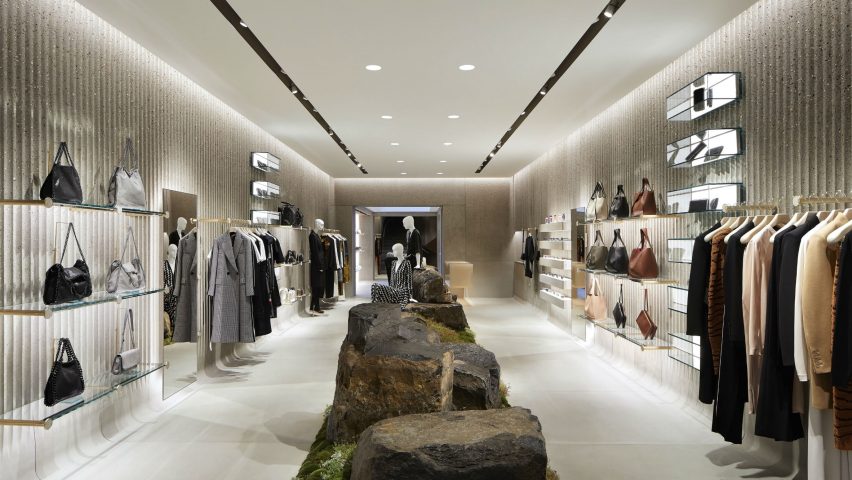Stella McCartney set out her sustainable approach to design in an interview with Dezeen last week. Here's a look at the five of her sustainable designs, including trainers made from sea plastic and a backpack made from fishing nets.
Throughout her design career, McCartney has stuck to a sustainable mission and used her platform to push change. Environmentally friendly materials feature in all her fashion and accessory designs, as well as the interiors of her new flagship store in London.
Speaking to Dezeen, McCartney said: "It's exhausting full stop, but we believe it, and we do it, and we won't stop. We are trying to create a new palette. The fashion industry works with the same 10 materials and we are questioning that. Things have got to change."
Here's a look at the five times the designer has chosen sustainable materials:
Harm-free shoes
For Autumn Winter 2018, the fashion designer released a trainer that doesn't use glue to stick them together.
Trainers are regularly made by sticking the sole to the bottom of the shoe, but these conventional glues contain toxic solvents which are not easily biodegradable.
In an effort to create a circular product design, McCartney's Loop trainers are instead created using specially designed hooks which hold the shoe together. This also allows the shoe to be fully dismantled so that the different components can be recycled individually.
"I use recycled plastics, vegetable oils, the list really goes on and on. I don't use glues that contain fish bones or anything, and I'm probably the only designer in the world doing that" said the designer.
Sustainable viscose
According to Stella McCartney her brand was the first to be able to trace the origin of its viscose, which is made from tree fibre, back to the forest it came from.
Each year, 150 million trees are cut down and turned into a cellulosic fabric which is woven into viscose. As a sustainable alternative, McCartney works with Canopy, a non-profit organisation, to source the raw pulp which forms the cellulosic fabric from a sustainably certified forest in Sweden.
This sustainable viscose is then used in McCartney-designed garments, accessories and shoes.
"I spent three years of my life dedicated to finding trees from a sustainable wood, and we wove that with mills that make conventional viscose. We had to train them and they resisted at first, but we persevered and now we've done it," McCartney explained to Dezeen.
Biodegradable mannequins
Fully biodegradable mannequins feature in Stella McCartney's new flagship store on London's Old Bond Street.
They are made from a bioplastic material composed of 72 per cent sugarcane derivatives. A paint made solely from renewable organic substances was then used to coat them.
Last year, McCartney teamed up with Adidas and non-profit organisation Parley for the Oceans, to design a new version of their Ultra Boost trainer, made using upcycled ocean plastic.
The designer has since extended her partnership with Parley for the Oceans, and continues to use ocean plastics in elements of her designs. Her flagship store features benches made from recycled plastic and foam.
Falabella Go backpack
The Falabella Go backpack, one of the fashion house's most well know items, is made using recycled nylon made from industrial plastic, waste fabric and fishing nets.
The designer says that this nylon is the same quality as virgin nylon in look and feel.
"Pretty much everything we make has a negative impact on the planet. For me as a designer, the minute I make something I think about the planet," said the designer.

